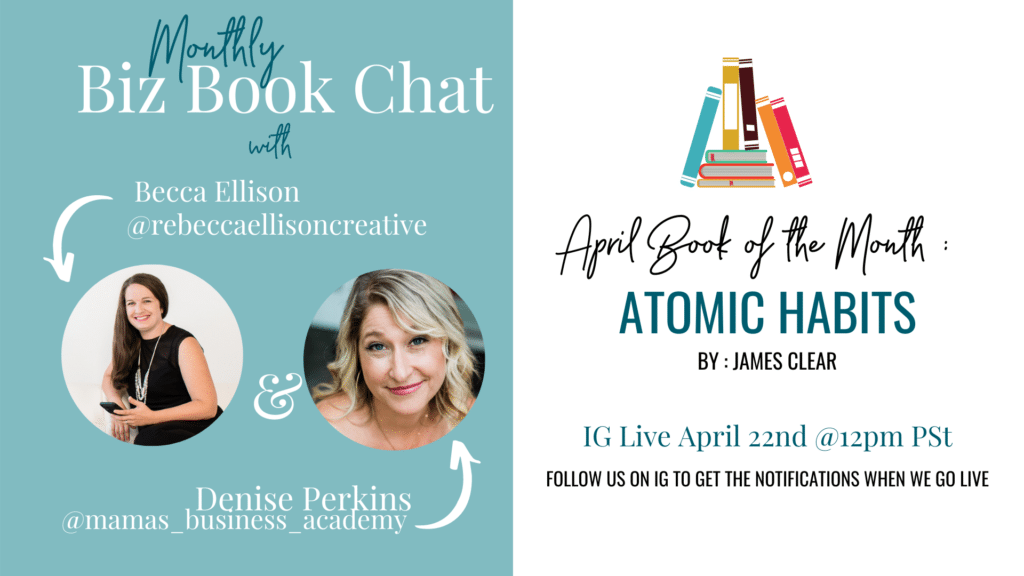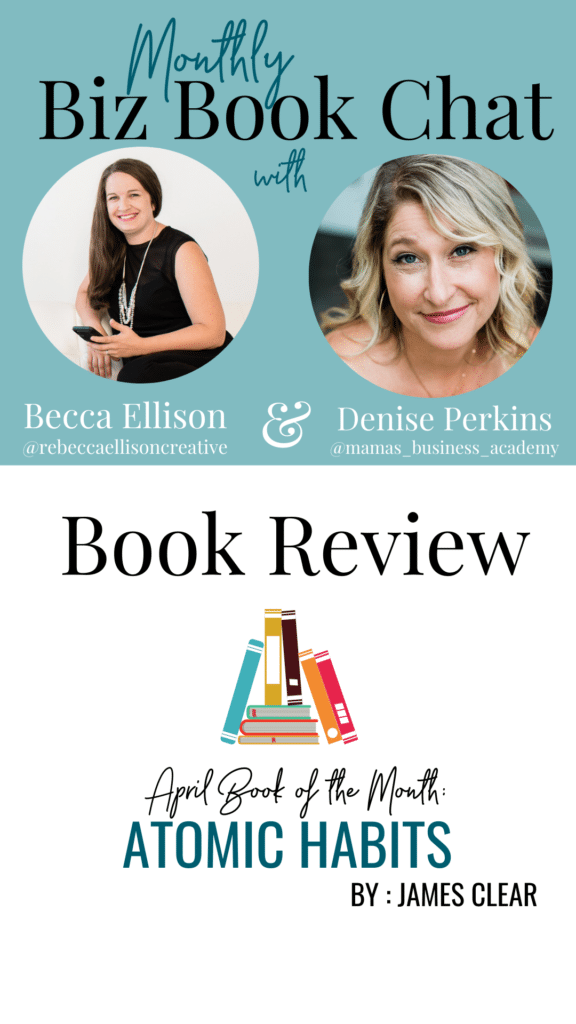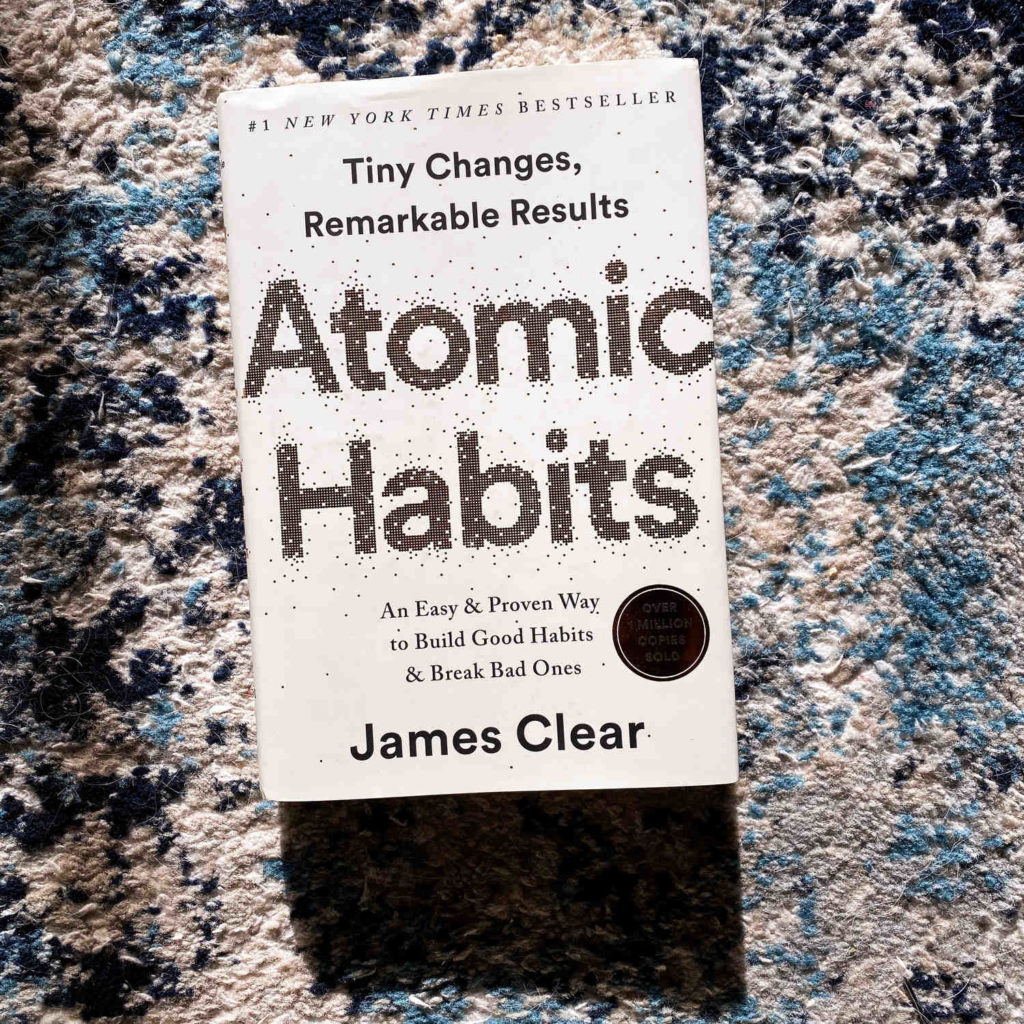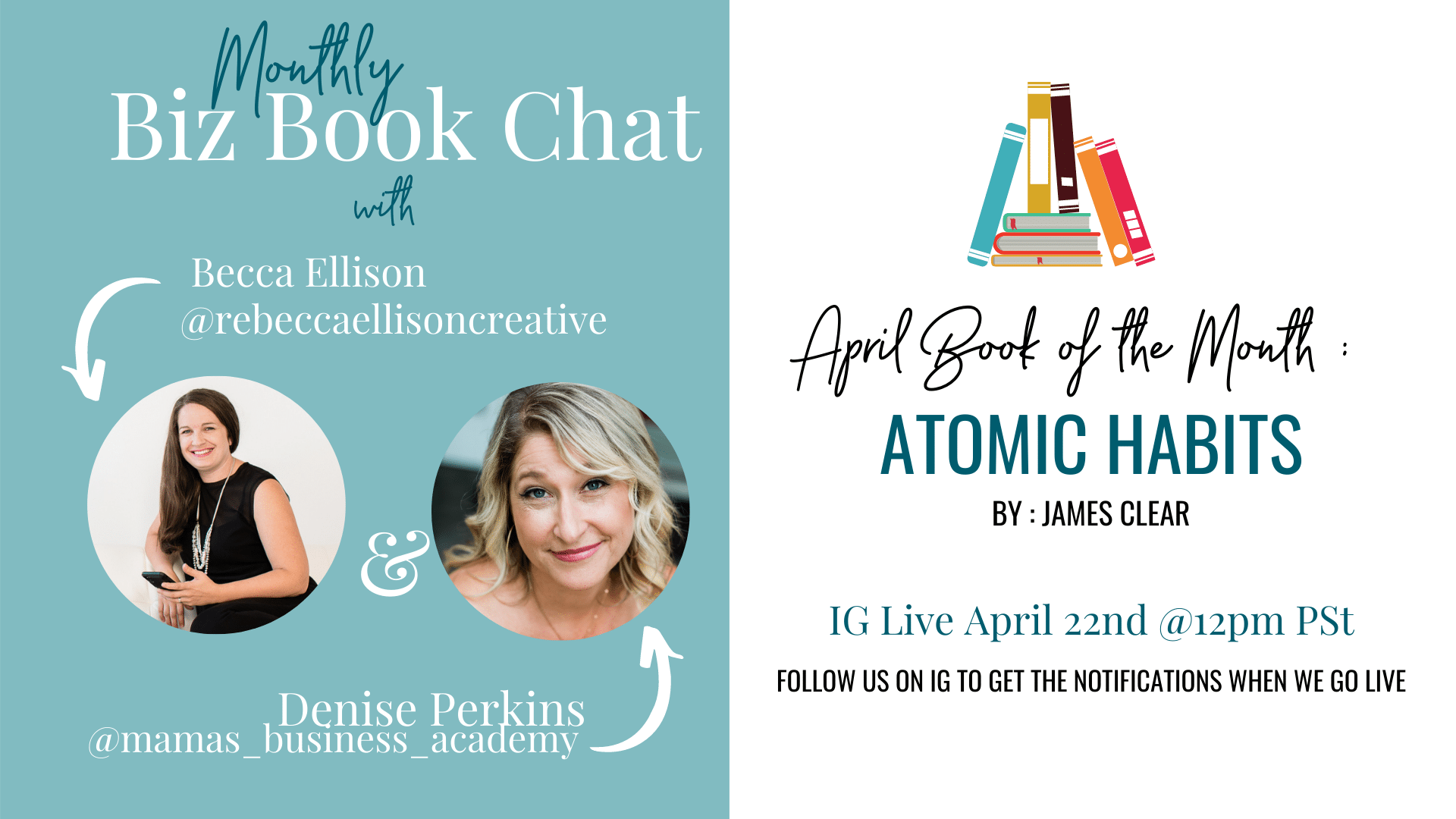
Biz Book Chat : Atomic Habits by James Clear
It’s no secret that our lives are filled with daily habits. Tasks and routines that we follow without thinking about them. We do the same thing again and again and again. Since our brain wants to use the least amount of energy on these daily tasks, we create habits.
Tasks we can do on autopilot to make our lives easier.
If you are anything like me though, creating new and purposeful habits has been really hard. I couldn’t tell you how many times I’ve tried to wake up early to get a “jump” on my day, because awake me knows I love to do this.
But half asleep Becca cares very little for what awake Becca prefers and the habit of waking up early gets killed with every bump of the snooze button.
Same goes for exercising or dieting or drinking only on the weekends. These are all habits I’ve tried to do, and inevitably failed at. Or I hit my goal and then I slide back into the previous habits I had before.
Needless to say, I’ve been excited to read this book since I heard James Clear on a podcast last year. The idea of tiny habits be catalysts to larger habits piqued my interest.
Because, even though I have not yet turned these above habits to real long term habits in my life, I still want to. And now with the tips and strategies from this book I feel like I have a realistic road map to make it happen.

Premise of the book Atomic Habits
James Clear starts out by explaining the system of habit creation. And when we fail on creating a new habit, it’s not a failure on us (phew!) but a failure on the system we are working on a new habit in.
He jumps right in, getting to the point that our habits shape our identity, and our identity shapes our habits.
That, all things in life are a possibility, and it comes down to your personal identity and the priorities that we set in our lives.
When you see the habit you are forming as part of the identity you have for yourself, you will have greater success in creating the habit.
Build identity based habits the confirm what you believe of yourself vs outcome based habits that are easy to stop once you’ve hit your desired outcome.
When you have a goal of losing 10 pounds, that habit is too short sighted and easy to fall off the habit train. Because losing 10 pounds isn’t going to tie into your identity.
Alternately, lets say you want to create a habit of working out 3x a week. You want this because you are building the identity of someone who takes care of their body through exercise. This habit is going to stick because this is what you believe of yourself. And if you are working out 3x a week… then you will lose those 10 pounds as well. But the weight loss isn’t the habit. The exercise is.
It’s not just overall grand thoughts, James dives into the exact formula you can follow to understand how to create a habit and how to create one that sticks.
He says there are 4 laws of building a strategy for new habits and they are based off of these steps.
Cue -> Craving -> Response ->Reward
He uses a simple example of a turning on a light switch when you walk into a room. It’s such an ingrained habit that we don’t even think about doing it. But it is a habit and this is how it follows the steps above:
Cue – you walked into a dark room
Crave- you want to see what is in the room
Response– you turn on the light switch
Reward- you can now see!
When you recognize these 4 steps in your habit you want to create, and build a system around them, then you can create a habit that sticks.
He takes the 4 steps and created laws of them to make it easier to remember.

The 4 Laws of Creating a Habit (that sticks)
Law 1 – Make It Obvious
When you want to build a habit, make it as obvious as possible. He goes over how motivation will inevitably fail, but if you build an environment that makes your habit in your face and obvious, it’s going to stay top of mind, and you are going to get it done.
Examples of the identity habit of taking care of your body through exercise would keep your exercise equipment in a space you see regularly. Write a reminder on your bathroom mirror etc.
Law 2- Make It Attractive
The last part of the habit forming steps from above is reward. And that reward part is very important, as we are reward motivated beings.
The hard thing about good habits is that many times the reward is not immediate. Like exercising 3x a week. Those 10 pounds may take a couple weeks or months to come off, and that is not motivating. Which makes it easy to throw in the towel.
So, find ways to make the habit attractive in other ways. Surround yourself with people who also have the same identity that you are trying to build so it’s not seen as a weird thing that you are making this habit a priority.
Or reward yourself with something else you like so that you do the task of the habit. For example, I am working on the identity of someone who takes better care of my body which means I want to use our rowing machine daily and build this habit.
I also have a couple of shows that I like to watch just for me on Hulu (This is Us, Manifest, Chicago Fire and the like). No one else watches those shows in my family, so it’s like my special treat.
I’ve made it a rule that I only watch my shows while on the rowing machine. This way I can zone into the show during my workout and the time passes while I also get my treat.
I haven’t missed a day yet!
Law 3- Make It Easy
The easier you make the habit to accomplish the easier it will be to do. When working on a bigger habit, what small thing can you do to trigger the bigger habit? For example, the habit I am building is putting my workout shoes on. If my shoes go on, I will hop on the rower. So I keep the shoes sitting on my bed all day. They are right in view whenever I go in my room And once they are on, I know I will work out.
Another part of making habits stick is to do what he calls “walk slowly, but never backwards” It’s not about going all in right at the beginning, because that is so easy to go backwards again and say f* it.
Make the habit small to start so that you can get used to showing up and doing it. If I try to go from not working out to making myself workout for 1 hour a day… I may do it for like 4 days and then fall off track. But if I make it slow, it lets me learn the repition of showing up each day. Building the habit of showing up, even if it’s small to start.
What this mean for my exercise habit, is that my goal is to row for 10 minutes. As long as I do the 10 minutes, I am successful. As I get used to it, or get really into my show lol, I end up lasting longer. But 10 minutes is easier to show up to than 1 hour.
Law 4- Make it Satisfying
This is similar to the attractive law, but is for the end of the habit. The attractive law makes you want to do the habit. The satisfying law is about making you look back at what you’ve done with enjoyment.
What is rewarded is repeated, so how do you make it satisfying. Like me watching shows only while on the rowing machine. I want to watch my shows and seeing my shows gives me a reward, so I am more likely to show up.
Especially when the habit is going to give you long term benefit but is lacking in the short term, it’s important to create that short term benefit for yourself. Otherwise it will be hard to suceed.
My Business Takeaway.
I’ve got no shortage of amazing takeaways from this book. I found myself pulling my notes app out time and time again because of the nuggets that I didn’t want to forget.
That is one of the habits I am building for retaining what it is that I am reading. I jot down the thought in my notes app so that I can review it again later. As if I don’t do that, I find that so many great strategies and tips get forgotten as the book continues.
The thing I love about the idea of building better habits is that even if I create a 1% difference in how I show up in business, that effort will compound and eventually I will have made a huge difference in how I run and show up for my business.
I don’t have any specific habits I am working on for my business at this exact moment. And yet, this book is beneficial for how I show up.
One of the lessons in the book is to put the habit I want to achieve written out and keep it in front of me. Which I am taking into my business by posting in my office my client goals to keep them front and center. This way I can keep moving forward and stay reminded of the way I want to show up.
My Personal Takeaways
My biggest personal takeaway for this book is the mindset shift from an outcome based habit like losing 10 pounds to an identity based habit like being a healthy person who takes care of my body.
I can much easier stay on the path that aligns with my identity vs something as silly as a bit of weight loss.
I also loved his premise of how to break bad habits, and how you just prime the system in reverse.
For building a good habit, make it obvious and lower the friction as much as possible.
For stopping bad habits, add as much friction to the habit as possible. Want to stop eating carbs, don’t have bread in your house. Want to stop drinking during the week, don’t have beer in the house. Things like that.
Because we always default to the easy route when possible.
At the end of the day, this book was an amazing read and I will read it again and again to help cement the lessons in my life.
Visit my IGTV profile to see my Biz Book Chat with Mama’s Business Academy here.
Next month we are discussing The Big Leap by Gay Hendricks
We go live on May 27th at 12pm PST on Instagram.
Click the picture to join!


The comments +